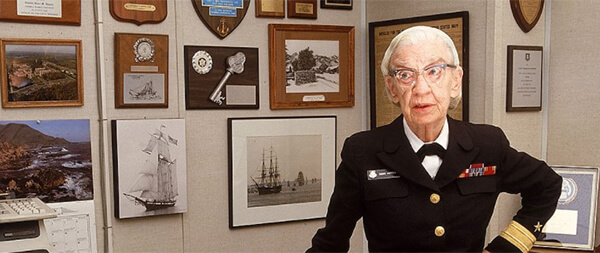
The #WomenInTech movement has been prominent in the news and on our social media feeds in recent years, and for good reason; despite it being 2017, fewer than 1 in 10 women are in leadership positions in the tech sector. Furthermore, statistics released by Google in January 2017 stated that only 31% of their employees are women.
“Women in tech” seems to have become a well-known phrase, predominantly over the last few years, despite women having worked in the tech industry for a considerable amount of time. Unbeknown to most, the tech sector was once very female-focused, and some of the world’s most revolutionary and ground-breaking techsperts over the last 200 years have been women. Furthermore, in spite of paving the way for men and women working in tech today, many women who have worked in tech over the years seem to not be as high profile as their male counterparts.
1. Ada Lovelace – born in 1815

Ada Lovelace was none other than the world’s first programmer. An English writer and mathematician, Ada made a name for herself through her work on Charles Babbage’s proposed mechanical general-purpose computer, more commonly known as the Analytical Engine. Despite Babbage believing the computer would be confined to numerical calculations, Ada was adamant that any piece of content, such as text, images and sound, could be translated and manipulated into a digital form, given the right data and instructions. Given today’s technological advances, it seems that she was right.
2. Grace Hopper – born in 1906

Grace Hopper was a United States Navy Admiral, and one of the first programmers in the history of computers. She believed that programming languages should be as easily understood as English, and was highly influential in the development of COBOL, one of the first programming languages. It is largely down to Grace Hopper that programmers use “if/then” instead of 1s and 0s today.
Furthermore, in the 1940s Grace had to remove a live moth from one of the electrical switches in the Mark II computer they were working with, hence the term “debugging”, still used today. She was also the first woman in history to be made Distinguished Fellow of the British Computer Society in 1973, and the first woman to ever receive the National Medal of Technology as an individual in 1991. She was also awarded the Presidential Medal of Freedom, posthumously, by Barack Obama in 2016.
3. Katherine Johnson – born in 1918

Katherine Johnson is a mathematician who, after working as a teacher, was hired by NASA as a “computer” – a member of staff who solved complex maths problems. She worked on NASA’s space program in its earliest days, starting in the 1950s, and a lot of NASA's first missions were made possible by Johnson's bold, unparalleled calculations.
In 1961, on the back of Katherine’s work, Alan Shepherd became the first American to go into space. She calculated his trajectory – the path he would take from launch to landing – and her calculations, as always, were successful. She also worked on the 1969 Apollo 11 moon landing mission, and in 1970 when Apollo 13 suffered the explosions of two oxygen tanks, Katherine helped to calculate a safe path back to earth for the stranded astronauts. She received the Presidential Medal of Freedom in 2015.
4. Mary Jackson – born in 1921

Mary Jackson worked alongside Katherine Johnson at NASA in the 1950s, working as a “computer”. After 5 years and numerous courses under her belt, she joined a special training program and was promoted to aerospace engineer in 1958, making her NASA’s first black female engineer. After co-authoring more than a dozen research reports for NASA, she took a demotion in 1979 to Langley’s Federal Women’s Program Manager. By doing so, she was able to control the recruitment of the next generation of all of NASA’s female mathematicians, engineers and scientists.
5. Margaret Hamilton – born in 1936

Margaret Hamilton is most commonly known for being the woman who put man on the moon. She is a computer scientist who was instrumental in developing the on-board flight software for the Apollo space program, which put Neil Armstrong on the moon in 1969. She was the lead Apollo flight software designer for many years, and it was Margaret who coined the term “software engineering”.
The photo above shows Margaret standing next to the navigation software that she helped to create for the Apollo project. She also received the Presidential Medal of Freedom from Barack Obama in 2016.
6. Carol Shaw – born in 1955

Carol Shaw is the first ever female video game designer, who, in 1978, designed the games Polo and 3D Tic-Tac-Toe for the Atari 2600, all in the same year. After working at Atari – which, of course, founded the video game industry – she went on work at Activision, followed by Tandem Computers. Although her career in video gaming lasted only 6 years, Carol Shaw’s name will go down in history as the first female video game designer, as she paved the way for all women working in the industry today.
7. Jade Raymond – born in 1975

Jade Raymond is a video game designer, and the founder of Ubisoft Toronto and Electronic Arts’ Motive Studios. After studying computer science at university, she went on to work as a programmer for Sony, where she worked as a producer on The Sims Online.
In 2004, she started working for Ubisoft, where she led the creation of the first ever Assassin’s Creed game, arguably her most famous role to date. Most recently she has been working with games designer and writer, Amy Hennig, on the Star Wars games.